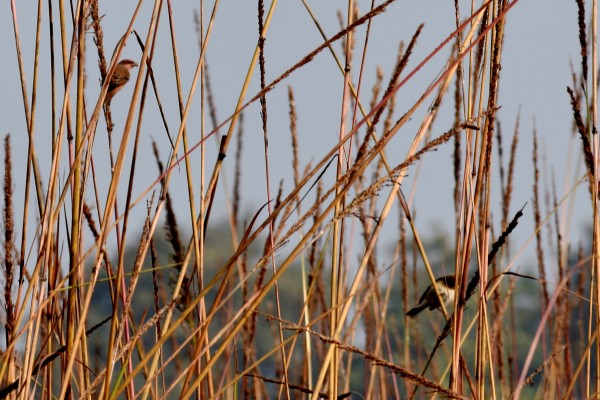Dudhwa Tiger Reserve represents the part of Terai ecosystem in the foothills of the Himalaya. The Sal (Shorea robusta) dominated forests interspersed with tall grasslands and numerous swamps characterize this tract and once this dynamic woodland-grassland-wetland complex harbored a variety of floral and faunal life including several charismatic and obligate species. The landscape witnessed sea change, mainly during the past 150 years or so on account of the long history of forest management, settlement of migrants, changes in land use, agriculture expansion, and various developmental activities. As a result, today the landscape depicts three large forest fragments and several, small and scattered forest fragments amidst human-dominated matrix. Three large forest fragments have been designated as protected areas and are part of ‘Dudhwa Tiger Reserve’, they are Dudhwa National Park (DNP), Kishanpur Wildlife Sanctuary (KWS), and Katerniaghat Wildlife Sanctuary (KAT). Besides several swamps, streams, and rivulets, Sharda and Ghagra are two prominent rivers of the landscape. The ‘Dudhwa Tiger Reserve’ is located between Lat N 28°06′ and 28° 37′, and Long E 80°20′ and 81°19′ with the Indo- Nepal international border constituting its northern boundary. The major portion of the tiger reserve lies in Lakhimpur Kheri and Bahraich Districts of Uttar Pradesh while a smaller extent extends into adjacent district i.e. Shajahanpur.
The hudge Grassland Dudhwa:
The natural areas (forests, grasslands, wetlands, coasts, and marine) recognized as a repository of biodiversity continue to exploit, shrink, and deteriorate. This is attributed to the expanding human footprint, ever-increasing biomass-based demands, greed, and ignorance. Protected areas considered as a means to conserve biodiversity were soon found to be inadequate in accomplishing conservation goals as a majority they exist as habitat remnants within a human-dominated matrix, mainly occupied by agriculture, settlement, developmental activities, and degraded areas. Under such circumstances, doubts have been raised about the integrity of natural ecosystems, the persistence of ecological processes, and even protected areas themselves.
The park covers an area of 498.29 km. and the topography is rather flat, with a mere 32-meter drop differentiating the extreme northern and southeastern corners. The soil structure is typified by an unusual absence of surface stones and rocks. The forest soaks in 1,600 mm. of rain annually and because it is well vegetated, groundwater levels are high as they are along most of the forested terai.
The southern limit of the Dudhwa National Park is marked by River Suheli and the northern edge of the sanctuary lies along the Indo-Nepal border. The abundance of rain makes Dudhwa brim over with fresh plant life-grasslands, thick forests, marshes, and wetlands. Seasonal floods are a common feature. The North Kheri Forest Division, in which the park is located, comprises moist deciduous forests and possibly has the finest quality sal in India. The grasslands lie south of the sal woods reaching their zenith after the rains. The tall and coarse grasses are often difficult even for elephants to negotiate. The region is characterized by dense thickets as well as swampy depressions.
The park’s mosaic of high forest interspersed with grasslands is characteristic of the Terai eco-systems in India and the area is, probably, the last prominent remnant of this type of eco-system. The forests, especially the sal forests, have always been very dense. The main flora comprises Sal, Asna, Shisham, Jamun, Gular, Sehore and Bahera. The grasslands comprise about 19% of the park. The wetlands constitute the third major habitat type and include the rivers, streams, lakes, and marshes. Protecting such trees from timber poachers is a full-time job for the park authorities. Agricultural crop fields, mainly sugarcane, encircle the forest.
The floral scent is highlighted by the silvery munj and the dry red retwa petals that give way to the golden blossoms of narkul or cotton-like kans, near the water bodies. Dew-laden flowers add to the freshness of early morning outings.




